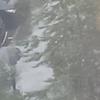As far as I understood, Questforlife, I think the idea is to use cryo-electron microscopy to identify the structure of HTERT activators and repressors and later create bio-identicals to use respectively as longevity and anti-cancer medication. Scan for activators in cancer cells with telomerase activity. Scan for repressor proteins in regular somatic cells.
Yes, that would be useful - providing the various sites can be identified, any resulting proteins or splicing factors could be examined and identified and either blocked or replicated with small molecules to get the required outcome: either telomerase inhibition or activation. I don't know how plausible achieving the first step is however: the identification of the relevant sites on the DNA, or how microscopy would help with that. It might be easier to examine splicing factors first in various cellular scenarios. Splicing factors are the switches that alter the form of a given protein that is produced, and its resultant functionality. It's very complicated to unpick all the splicing factors however.
One alternative might be to make a synthetic molecule with the shape of telomerase and then find a way to get it into every cell. But then why not just do gene therapy instead?
These difficulties are why I am pursuing 'Alternative methods to extend telomeres', with the current emphasis on progenitor cell generation (which have less restricted telomerase) along with telomerase activation. This has the added bonus of also reducing epigenetic age, which may also be beneficial.
Edited by QuestforLife, 07 January 2019 - 10:20 AM.



























































